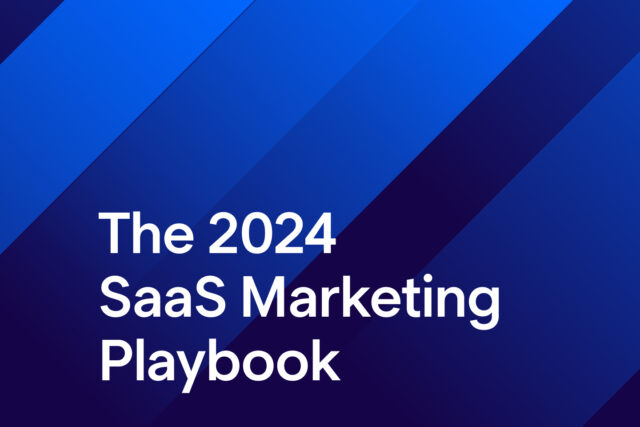In the rapidly evolving landscape of the Software as a Service (SaaS) sector, marketers are constantly seeking innovative strategies to drive growth. Enter account-based marketing (ABM), a personalised and targeted approach that has proven particularly effective for SaaS businesses. Imagine if you could pick specific individuals within a business that you want to deliver an ad to because you know they’re your perfect prospect – sounds great right? That’s exactly what ABM can do.
At its core, ABM is about tailoring marketing efforts to individual target accounts rather than broad audience segments. In the context of SaaS, where precision in targeting is paramount, ABM should be a strategic imperative. By focusing on specific accounts, SaaS companies can build more meaningful and lasting customer relationships.
SaaS businesses often rely on subscription models and thrive on long-term customer relationships – ABM aligns perfectly with this model by concentrating efforts on high-value accounts. This ensures that marketing resources are invested where they matter most: into maximising customer lifetime value. While performance marketing ad spend often goes straight to the big name players like Google and LinkedIn advertising via paid search and social, ABM offers an alternative approach to getting right in front of your ideal users with much more personalised messaging and creative.
Key components of ABM for SaaS businesses
Identifying ideal customer profiles (ICPs)
Defining ideal customer profiles is foundational to ABM. These profiles help identify the characteristics of the most valuable customers, guiding marketing efforts toward similar prospects. Consider factors like industry, company size, and pain points when creating your ICPs.
Building target account lists
Once ICPs are established, building a targeted account list is the next step. Leverage data and analytics to prioritise accounts based on their potential value. This ensures that your efforts are focused on the accounts most likely to convert.
Personalised content development
Tailor your content to address the specific needs and pain points of each target account. Personalised content can include case studies, whitepapers, or even personalised video messages. The goal is to demonstrate a deep understanding of the account’s challenges and present your solution as the ideal fit.
Implementing ABM strategies for SaaS
For a successful ABM campaign, alignment between sales and marketing teams is non-negotiable. Regular communication and shared goals are vital. This collaboration ensures that messaging and outreach are consistent across all touch-points in the customer journey and that you’re having a conversation with the prospect as a unified team.
Utilising technology and tools
Investing in ABM tools and technologies is essential for efficiency. Let’s explore a few examples of tools that SaaS companies can leverage.
6sense is a comprehensive platform that harnesses the power of AI and big data. It offers account-based orchestration, predictive analytics, and intent data to help SaaS businesses identify and target high-potential accounts.
Demandbase specialises in account identification, targeting, and engagement. It provides features such as account scoring, personalised advertising, and account-based analytics.
StackAdapt is a programmatic advertising platform that supports ABM campaigns and recently integrated with Lead Forensics to improve their user identification. It offers tools for precision targeting, allowing SaaS businesses to reach specific accounts with personalised content.
Developing and executing targeted campaigns is the core of ABM. Depending on your resources and the preferences of your target accounts, these campaigns can include personalised emails, direct mail, social media outreach, or a combination of these. The key is to be where your audience is and deliver a consistent, personalised message.
Measuring and analysing ABM success
There are two key considerations you need to focus on when it comes to measuring the success of your ABM activity:
Define key performance indicators (KPIs)
Before you even launch, you need to make sure that you identify and define KPIs that align with your ABM goals. Metrics such as engagement rates, conversion rates, and customer lifetime value can provide insights into the effectiveness of your ABM efforts. Regularly monitor these KPIs to track progress and make data-driven adjustments throughout the lifetime of your activity.
Analyse ROI
Measuring the return on investment (ROI) of your campaigns is crucial for demonstrating the value of ABM initiatives. Calculate the revenue generated from ABM-driven deals and compare it against the costs incurred. This analysis provides a clear picture of the impact of ABM on your bottom line. It’s also useful to compare the ROI from ABM vs. your other marketing activity – how does the customer acquisition cost compare to that of paid search or social?
The takeaway
Account-based marketing is not a one-size-fits-all solution, but for SaaS businesses it offers a strategic framework for sustainable growth in what is an incredibly expensive and competitive advertising industry to be in. By identifying ideal customer profiles, building targeted account lists, and executing personalised campaigns, SaaS companies can cultivate long-term relationships that drive revenue and success.
As you embark on your ABM journey, remember that adaptation and continuous improvement are key. Stay agile, leverage technology, and watch your SaaS business thrive in the era of personalised marketing.
Want some guidance around running your ABM campaigns? Get in touch.





